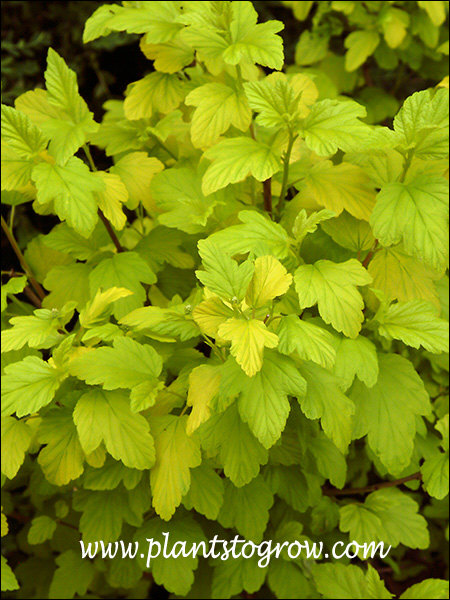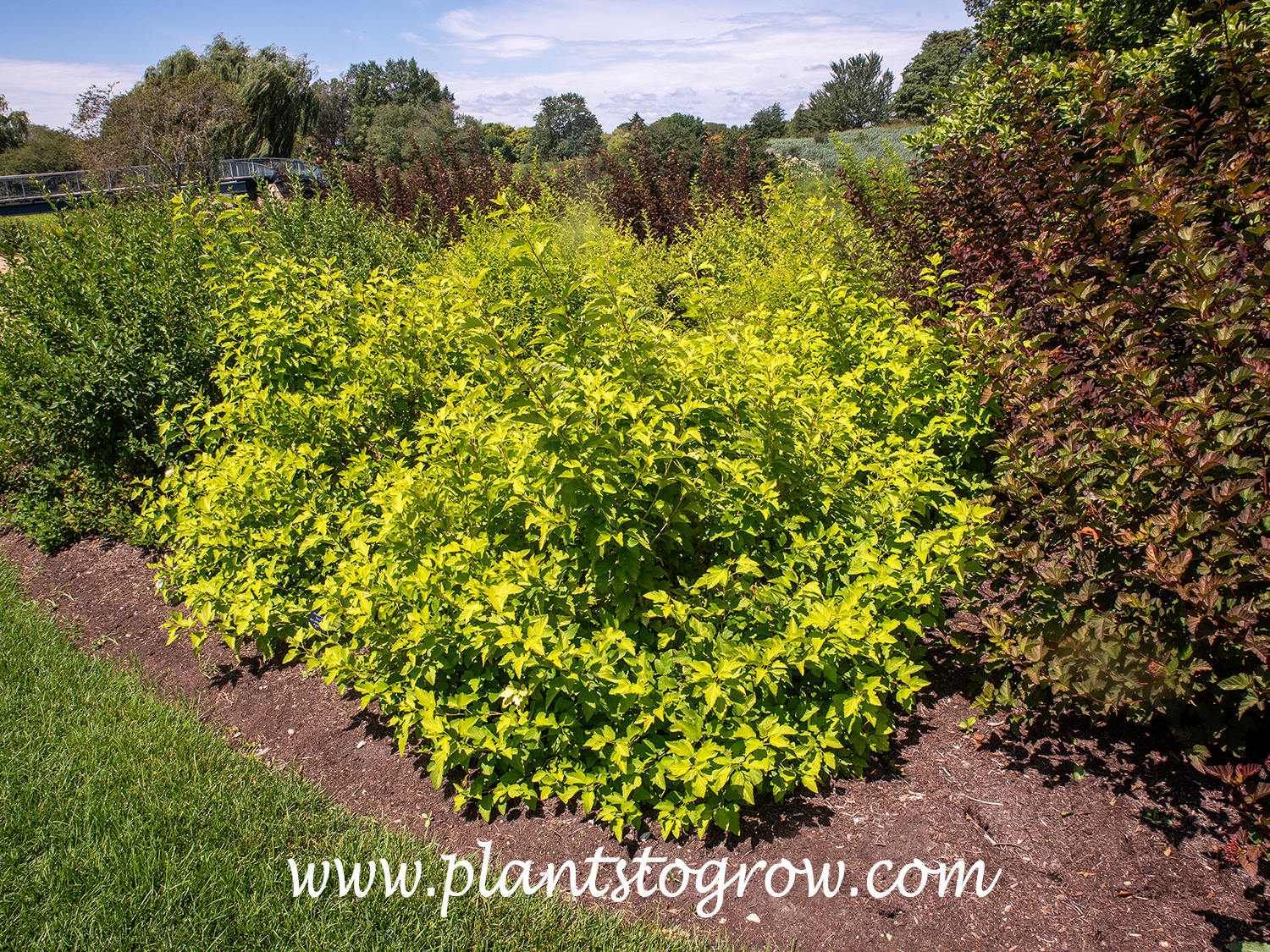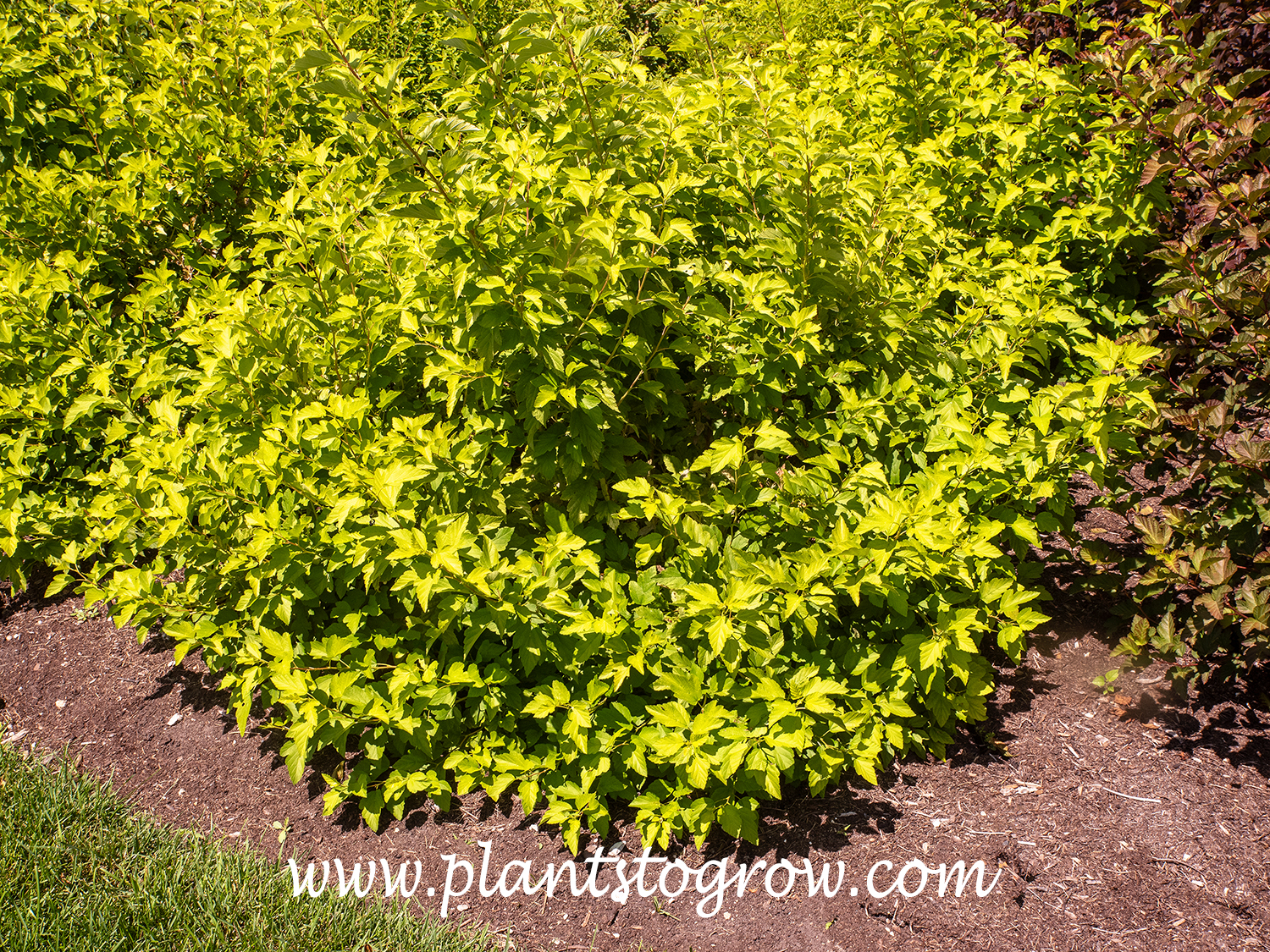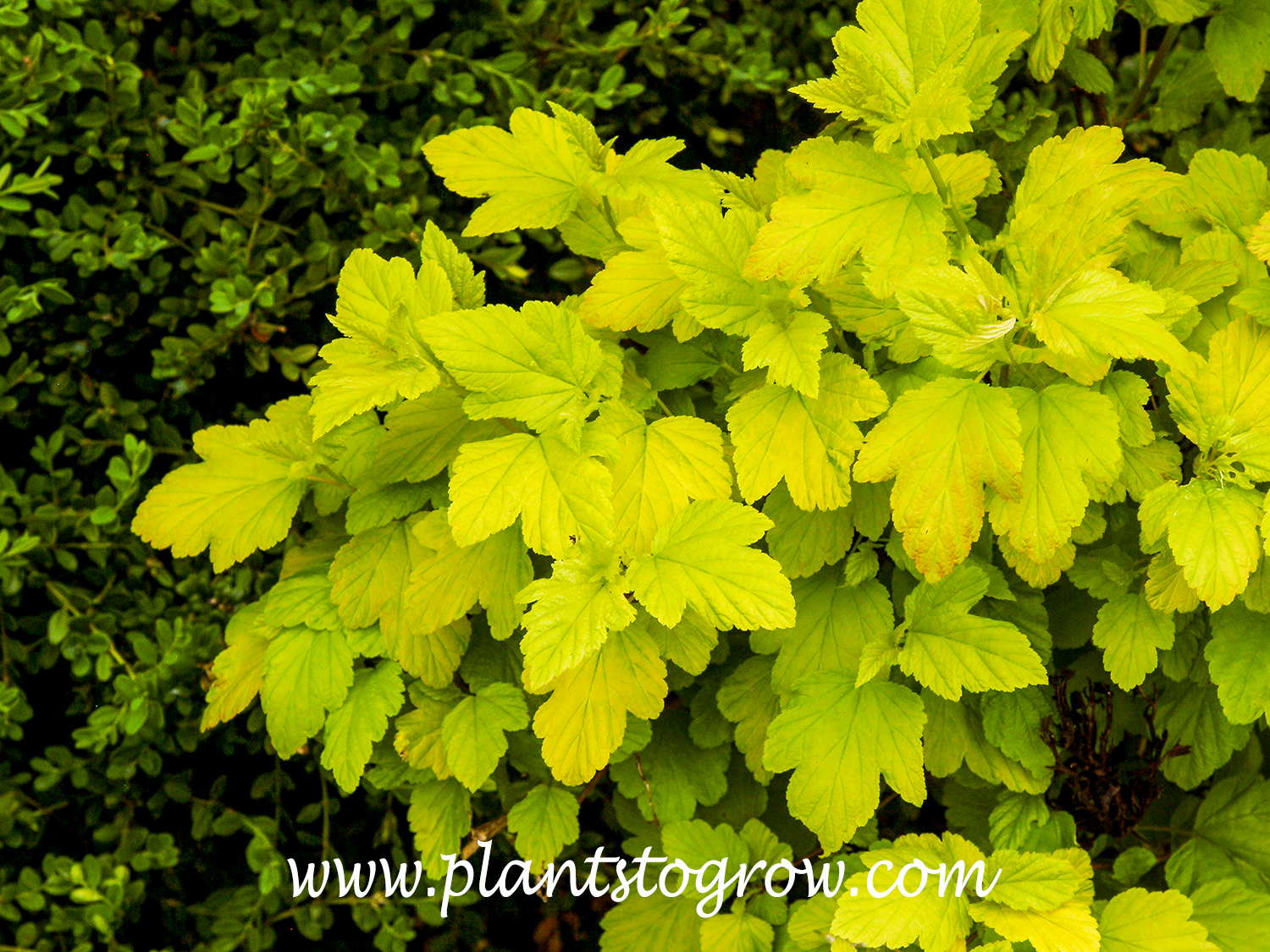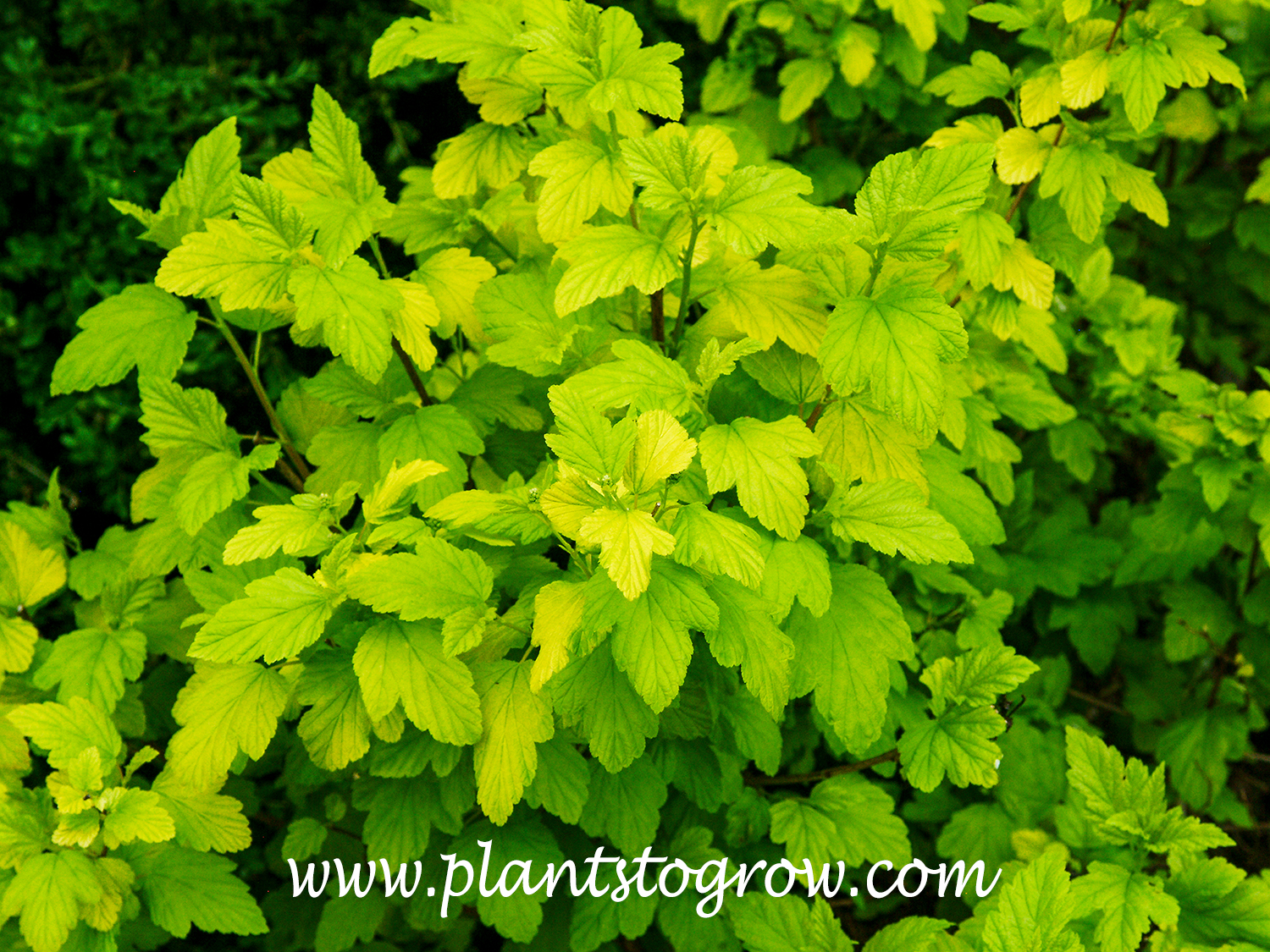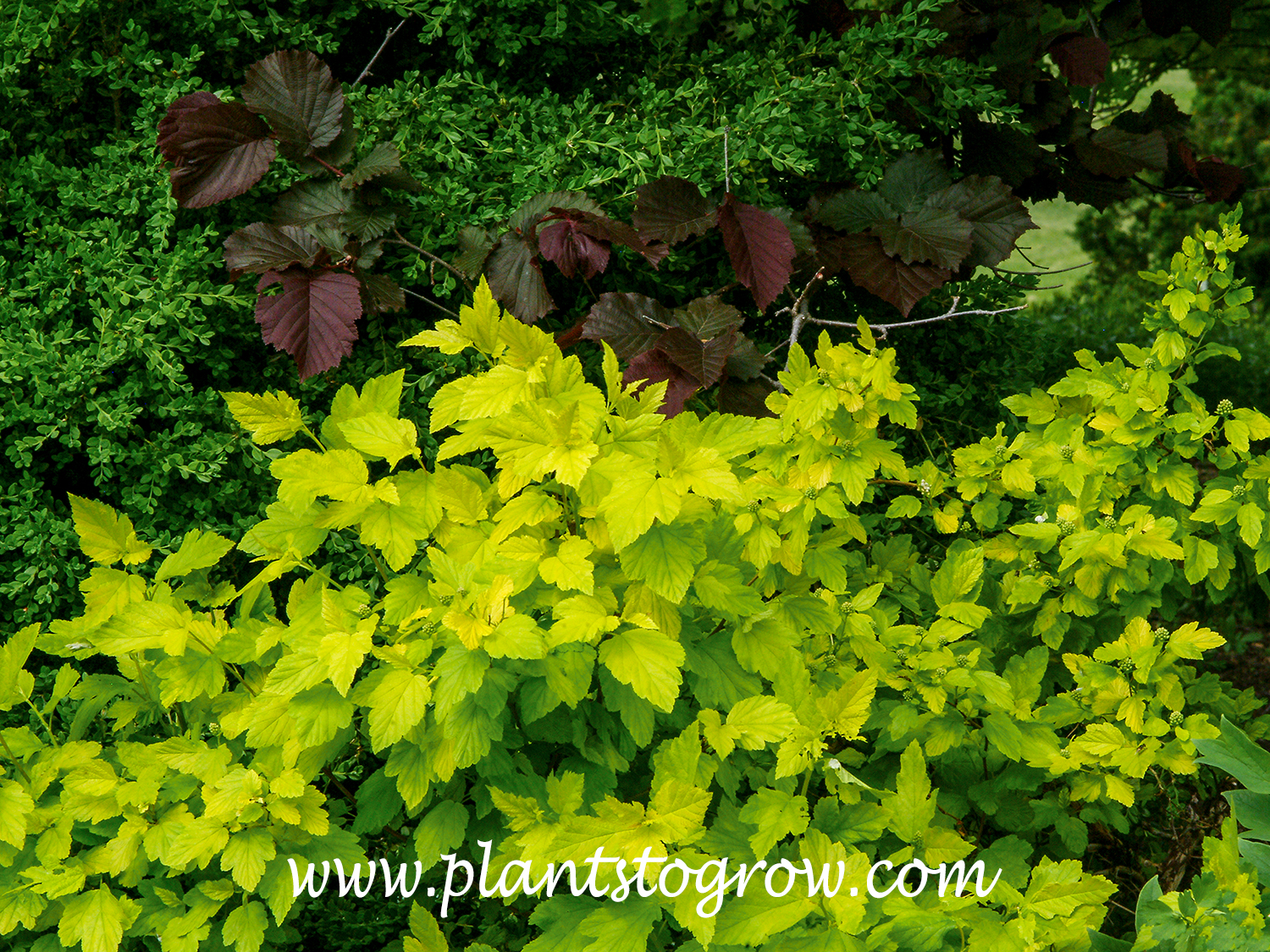| Description | Darts Gold Ninebark (Physocarpus opuilifolius) is a compact deciduous shrub. The foliage emerges a bright golden yellow in spring, gradually ages to chartreuse/lime green by mid-summer and finally turns yellow with bronze tinting in fall. Has flat-topped globular clusters of white flowers |
|---|---|
| Pronunciation | (fi-so-KAR-pus)(op-u-li-FO-li-us) |
| Plant Type | Shrubs Deciduous |
| Hardiness Zone | 4-8 |
| Sunlight | Needs full sun to get the best foliage color. In shaded conditions, the foliage color will be green-yellow. |
| Moisture | average |
| Soil & Site | average |
| Flowers | small pinkish white, five petaled, in dense flat rounded clusters (corymbs) |
| Fruit | red, drooping inflated seed capsules with 3-5 follicles |
| Leaves | three-lobed, emerges golden in the spring changing to lime-green or chartreuse in the summer, yellow and bronze-red autumn foliage, becomes a bit muted in shaded |
| Stems | exfoliating, with an orange brown bark on the older stems |
| Dimensions | Despite its name, this plant can reach a height of 5-6 feet with an equal or greater spread. |
| Maintenance | Prune to maintain size and shape. |
| Propagation | cuttings |
| Native Site | The common Ninebark (Physocarpus opulifolius) is native from the East Coast to the States just west of the Mississippi and up through Canada. |
| Misc Facts | The genus name comes from the Greek physa, meaning a bladder, and karpos, meaning fruit, referring to the plant's inflated dry fruits. |
| Notes & Reference | #01-Manual of Woody Landscape Plants (Michael Dirr). #144-Missouri Botanical Gardens website (www.missouribotanicalgarden.org) |

Cart
